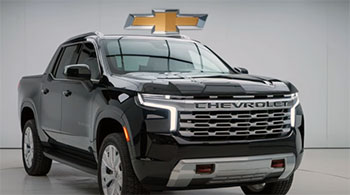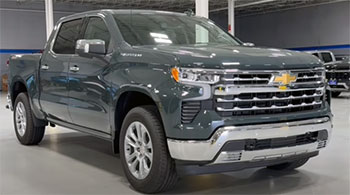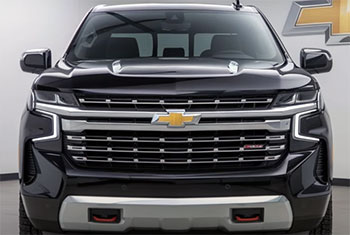I’ve always been a Chevy guy, drawn to the rugged charm and reliability of their trucks. When it came time to choose between the Chevrolet Avalanche and the Chevrolet Silverado, I found myself weighing two beasts with distinct personalities.
My goal with this article is to share my firsthand experience, breaking down the pros and cons of each to help you decide which truck fits your lifestyle. Whether you’re hauling gear, cruising off-road, or need a family-friendly ride, I’ll compare these trucks’ key features, performance, and quirks to guide your choice.
Comparison Table: Avalanche vs. Silverado
| Feature | Chevrolet Avalanche (2013) | Chevrolet Silverado 1500 (2013) |
|---|---|---|
| Body Style | Unibody, SUV-pickup hybrid | Body-on-frame, traditional pickup |
| Engine | 5.3L V8 FlexFuel, 320 hp, 335 lb-ft torque | 5.3L V8 FlexFuel, 315 hp, 335 lb-ft torque |
| Transmission | 6-speed automatic | 6-speed automatic |
| Bed Length | 63.3 inches (98 inches with midgate down) | 69.3, 78.7, or 97.8 inches |
| Towing Capacity | Up to 8,100 lbs | Up to 10,200 lbs |
| Payload Capacity | Up to 1,263 lbs | Up to 1,890 lbs |
| Fuel Economy | 15 city / 21 highway / 17 combined mpg | 15 city / 21 highway / 17 combined mpg |
| Drive Type | 2WD or 4WD | 2WD or 4WD |
| Interior Space | Spacious, SUV-like, seats up to 6 | Varies by cab (Regular, Extended, Crew), seats 3-6 |
| Safety Features | Backup camera, rear parking aid, stability control | Blind-spot monitoring, lane departure warning |
| Base Price (2013) | ~$35,980 | ~$23,590 |
My Experience With the Chevrolet Avalanche

When I first slid into the driver’s seat of a 2013 Chevrolet Avalanche, it felt like stepping into a hybrid of everything I loved about SUVs and pickups.
Built on the same GMT900 platform as the Suburban, the Avalanche blends the comfort of an SUV with the utility of a truck. Its standout feature, the midgate, lets you fold down the rear seats and extend the bed from 63.3 inches to a whopping 98 inches—perfect for carrying a 4×8 sheet of plywood with the tailgate closed.
I remember hauling lumber for a home project and being amazed at how seamlessly the midgate transformed the truck’s cargo space.
The Avalanche’s 5.3L V8 FlexFuel engine churned out 320 horsepower and 335 lb-ft of torque, paired with a smooth 6-speed automatic transmission. It handled my daily commute with ease, and the coil spring rear suspension made the ride surprisingly plush for a truck, especially on rough backroads.
The interior felt like a luxury SUV, with heated leather seats, a Bose sound system, and dual-zone climate control on higher trims like the LTZ. I took it off-roading once with the Z71 package, and the skid plates and all-terrain tires gave me confidence on muddy trails.
But it wasn’t all smooth sailing. The unibody design, while great for ride quality, meant any body damage could be a pricey fix since the chassis and body are one piece. The 31.5-gallon fuel tank was a blessing for long trips, but the 15/21 mpg wasn’t exactly wallet-friendly.
I also noticed the rear window was tiny, making rear visibility a challenge without the backup camera. Still, the Avalanche’s versatility made it feel like a Swiss Army knife on wheels, perfect for someone like me who needs a truck for work and family adventures.
Pros Of the Chevrolet Avalanche
- Unique Midgate Design: The midgate is a game-changer, letting you extend the bed to 98 inches by folding down the rear seats and lowering the rear window. I hauled oversized items like plywood and drywall effortlessly, something most traditional trucks can’t do without an extended bed.
- SUV-Like Comfort: The Avalanche’s interior feels like a Suburban, with plush seating for up to six and premium features like heated leather seats and a Bose sound system. My family loved the spacious cabin during road trips, and the dual-zone climate control kept everyone happy.
- Smooth Ride Quality: Thanks to coil spring rear suspension, the Avalanche rides smoother than most pickups. I noticed this especially on bumpy rural roads, where it felt less jarring than leaf spring setups.
- Off-Road Capability (Z71 Package): The Z71 package adds skid plates, all-terrain tires, and AutoTrac 4WD, making it a beast off-road. I tackled muddy trails with confidence, and the truck never felt out of its depth.
- Generous Fuel Tank: With a 31.5-gallon tank, I could go longer between fill-ups, which was a lifesaver on long hauls across state lines.
- Safety Features: The backup camera, rear parking aid, and stability control gave me peace of mind, especially when maneuvering in tight spaces or towing a trailer.
- Versatile Configurations: Available in 2WD or 4WD, with trims like LS, LT, and LTZ, it caters to different needs. I appreciated the flexibility to choose based on my budget and priorities.
The Avalanche’s blend of utility and comfort made it a standout. I could take it to a job site, load it up with gear, and still feel like I was driving a high-end SUV on the way home. The midgate alone saved me multiple trips when moving furniture, and the smooth ride made daily driving a pleasure. For anyone who wants a truck that doubles as a family hauler, the Avalanche delivers in spades.
Read More: My Thoughts On GMC Terrain Vs. Ford Escape
Cons Of the Chevrolet Avalanche
- Unibody Repair Costs: The unibody structure, while great for ride quality, is a headache for repairs. I once got a quote for a minor fender bender, and the cost was steep because body damage affects the chassis, unlike the Silverado’s body-on-frame design.
- Limited Towing Capacity: With a max towing capacity of 8,100 lbs, it lags behind competitors like the Silverado. I found it sufficient for small trailers but struggled when towing heavier loads like a boat or camper.
- Poor Rear Visibility: The tiny rear window made backing up tricky without the camera. I often relied on the side mirrors, which wasn’t ideal in crowded parking lots.
- Fuel Economy: At 15 city and 21 highway mpg, the Avalanche isn’t a gas sipper. My fuel bills added up quickly, especially during city driving or when hauling heavy loads.
- Discontinued Production: Chevy stopped making the Avalanche in 2013, so you’re limited to used models. Finding parts for older models can be a hassle, and I worried about long-term maintenance.
- Smaller Standard Bed: The 63.3-inch bed is shorter than most full-size pickups. Even with the midgate, I sometimes wished for a longer standard bed for oversized cargo without reconfiguring the interior.
- Higher Base Price: Starting at around $35,980 in 2013, it was pricier than the Silverado. I felt the cost was justified by the features, but it’s a stretch for budget-conscious buyers.
The Avalanche’s quirks, like its repair costs and limited towing, were noticeable drawbacks. I often wished for better fuel economy, especially on long commutes. The unibody design, while innovative, made me nervous about potential repair bills, and the shorter bed required extra planning for big hauls. Still, these cons didn’t overshadow its versatility for me, but they’re worth considering if towing or cost is a priority.
My Experience With the Chevrolet Silverado

The 2013 Chevrolet Silverado 1500 felt like the quintessential pickup truck the moment I got behind the wheel. Built on a body-on-frame platform, it’s a workhorse designed for heavy-duty tasks.
I drove a Crew Cab model with the same 5.3L V8 FlexFuel engine as the Avalanche, producing 315 horsepower and 335 lb-ft of torque.
It towed my buddy’s trailer—loaded with ATVs—without breaking a sweat, thanks to its 10,200-lb towing capacity.
The bed, available in 69.3, 78.7, or 97.8 inches, gave me plenty of room for gear, and the factory-installed spray-in bedliner was a nice touch for durability.
The Silverado’s interior, while not as plush as the Avalanche, was functional and spacious, especially in the Crew Cab. I liked the MyLink infotainment system, which made connecting my phone a breeze. The leaf spring rear suspension made the ride a bit stiffer, but it handled heavy payloads like a champ.
Off-road, the Z71 package with 4WD and all-terrain tires held its own, though it didn’t feel as cushy as the Avalanche. I used it for everything from construction jobs to weekend camping trips, and it never let me down.
Still, the Silverado had its downsides. The base interior felt a bit spartan compared to the Avalanche, and I missed the premium touches unless I opted for higher trims. The 24-gallon fuel tank meant more frequent stops on long drives, and the lack of a midgate limited cargo flexibility. But for raw utility and towing power, the Silverado was hard to beat.
Pros Of the Chevrolet Silverado
- Superior Towing Capacity: With up to 10,200 lbs of towing capacity, the Silverado outshines the Avalanche. I towed a heavy trailer with ease, making it ideal for work or recreational hauling.
- Larger Bed Options: Available in 69.3, 78.7, or 97.8 inches, the bed offers more standard cargo space. I could load up tools and materials without needing to reconfigure the interior.
- Body-on-Frame Durability: The separate frame and body make repairs cheaper and easier. I appreciated this when a dented tailgate didn’t turn into a chassis nightmare.
- Advanced Safety Features: Blind-spot monitoring and lane departure warnings (on higher trims) gave me extra confidence on highways, especially in heavy traffic.
- Lower Base Price: Starting at $23,590 in 2013, it’s more budget-friendly than the Avalanche. I found it a great value for the performance and features offered.
- Multiple Cab Configurations: With Regular, Extended, and Crew Cab options, it suits solo drivers or families. I loved the Crew Cab for extra passenger space on group trips.
- Ongoing Production: Unlike the Avalanche, the Silverado is still in production, ensuring easier access to parts and service. This gave me peace of mind for long-term ownership.
The Silverado’s raw power and versatility made it a go-to for heavy-duty tasks. I never worried about overloading it, and the larger bed was a lifesaver for big projects. The lower price and repair-friendly design were bonuses, especially for someone who uses a truck daily for work. It’s a no-nonsense choice for those who prioritize utility.
Cons Of the Chevrolet Silverado
- Stiffer Ride Quality: The leaf spring rear suspension makes the ride bumpier than the Avalanche’s coils. I felt every pothole on rural roads, which got old fast.
- Smaller Fuel Tank: The 24-gallon tank meant more frequent fuel stops on long trips. I envied the Avalanche’s longer range during cross-country drives.
- Less Premium Interior: The base interior feels utilitarian, with cloth seats and fewer luxury touches. I had to upgrade to higher trims to match the Avalanche’s comfort.
- No Midgate Feature: Without a midgate, cargo flexibility is limited. I couldn’t carry long items like plywood without leaving the tailgate down, which was inconvenient.
- Fuel Economy: Like the Avalanche, it gets 15/21 mpg, but the smaller tank makes it less practical for long hauls. My fuel costs were noticeable in city driving.
- Less SUV-Like Comfort: The Silverado’s cabin, while spacious, doesn’t feel as plush as the Avalanche’s. My family noticed the difference on long road trips.
- Basic Base Trims: Lower trims lack the tech and comfort of higher-end models. I found the base model’s infotainment and seats underwhelming compared to the Avalanche.
The Silverado’s stiffer ride and lack of a midgate were my biggest gripes. I missed the Avalanche’s cushy interior and cargo versatility, especially for mixed-use scenarios. The smaller fuel tank was a constant annoyance on long drives, and the base model felt a bit too bare-bones for my taste. Still, its towing and durability kept it in the running.
Choosing Between the Avalanche and Silverado
As I compared the Avalanche and Silverado, their distinct purposes became clear. The Avalanche is a hybrid marvel, blending SUV comfort with truck utility. Its midgate and spacious interior made it my go-to for family trips and light hauling. I loved the smooth ride and premium features, but the unibody repair costs and limited towing gave me pause. The Silverado, on the other hand, is a traditional pickup built for work. Its towing power, larger bed, and budget-friendly price were perfect for heavy-duty tasks, though the stiffer ride and less luxurious interior were trade-offs.
Your choice depends on your needs. If you’re like me, juggling family duties and occasional hauling, the Avalanche’s versatility is hard to beat. Its ability to transform from a comfy SUV to a capable truck made it feel like two vehicles in one. But if you need raw power for towing or a larger bed for work, the Silverado’s body-on-frame design and higher capacities make it the better pick. I tested both on similar routes—city commutes, highway drives, and off-road trails—and found the Silverado more suited for job sites, while the Avalanche shone for mixed-use adventures.

The Avalanche’s unibody design, while innovative, can be a liability for repairs, especially if you’re accident-prone or live in areas with rough roads.
I learned this the hard way after a minor scrape cost more than expected.
The Silverado’s separate frame, however, makes it a safer bet for durability and cost-effective maintenance. Fuel economy is a toss-up—both guzzle gas at similar rates—but the Avalanche’s larger tank gives it an edge for long trips.
I’d fill up less often, which saved time and hassle.
Off-road, both trucks perform well with their respective Z71 packages, but the Avalanche’s coil springs gave it a slight edge in ride comfort on uneven terrain. I took it through muddy trails and felt less jostled than in the Silverado, which leaned on its stiffer leaf springs. For towing, though, the Silverado was unmatched. I hauled a 7,000-lb trailer with no issues, while the Avalanche started to strain with similar loads.
Interior-wise, the Avalanche felt like a luxury SUV, with soft-touch materials and a quiet cabin. My kids loved the extra space and heated seats on winter trips. The Silverado’s Crew Cab was roomy, but the base model’s cloth seats and basic dashboard didn’t impress. Upgrading to higher trims like the LTZ closed the gap, but it bumped up the price closer to the Avalanche’s.
Safety is another key factor. The Avalanche’s backup camera and parking aids were lifesavers in tight spots, but the Silverado’s advanced features like blind-spot monitoring gave it an edge in modern tech. I felt safer on highways with the Silverado’s alerts, especially in heavy traffic. However, the Avalanche’s recalls for airbag and brake issues raised some concerns, while the Silverado had a cleaner record.
Price-wise, the Silverado’s lower starting point ($23,590 vs. $35,980 in 2013) makes it more accessible, especially for work-focused buyers. I appreciated the value, but the Avalanche’s premium features justified its cost for my mixed needs. Availability is another consideration—since the Avalanche was discontinued in 2013, you’re hunting for used models, which can vary in condition. The Silverado’s ongoing production means newer options and easier part access, a big plus for long-term ownership.
Ultimately, my experience taught me that the Avalanche is ideal for those who want a do-it-all vehicle—part truck, part SUV. The Silverado, however, is the workhorse for those prioritizing towing, payload, and durability. Your lifestyle will dictate the winner. If you’re hauling heavy loads or working construction, go Silverado. If you need a family-friendly truck with unique cargo flexibility, the Avalanche is your match.
Read More: My Thoughts On BMW X7 Vs. Cadillac Escalade
Frequently Asked Questions (FAQ)
No, they’re not the same. The Avalanche is a unibody SUV-pickup hybrid with a midgate, built on the Suburban platform. The Silverado is a traditional body-on-frame pickup with larger bed options and higher towing capacity.
The Avalanche combines SUV comfort with truck utility, offering a midgate to extend the bed to 98 inches, ideal for families needing versatility for hauling and passenger space.
The 2013 model is considered the most reliable, as Chevrolet addressed earlier issues, offering refined features and the luxurious Black Diamond Edition.
The Avalanche has a 63.3-inch bed, extendable to 98 inches with the midgate. The Silverado offers 69.3, 78.7, or 97.8-inch beds, depending on configuration.
Conclusion: For Your Next Chevy Truck
You’re at a crossroads, and I’ve been there—deciding between the Chevrolet Avalanche and Silverado is no small task. If you’re after a truck that feels like an SUV, with a clever midgate and family-friendly comfort, the Avalanche is your pick. It’s perfect for weekend warriors like me who need versatility. But if towing power, a larger bed, and lower costs matter most, the Silverado’s your workhorse. Weigh your needs—family trips or heavy-duty jobs—and test-drive both. You’ll find the one that feels like home, just like I did.

